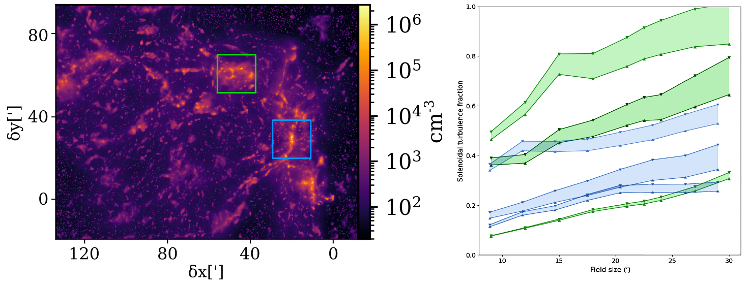| EPoS Contribution |
|
Tracing turbulence properties, volume densities and star formation
Jan Orkisz Chalmers, Gothenburg, SE | |
| Star formation in molecular clouds is controlled by many parameters, including gravity, magnetic fields, stellar feedback, etc. The nature of turbulence also plays a key role: compressive motions, as opposed to solenoidal motions, can trigger the collapse of cores, or mark the expansion of Hii regions. The mechanisms that inject kinetic energy are often compressive in nature (self-gravity or feedback), however star formation remains a highly inefficient process. We derive observationally in Orion B the solenoidal/compressive momentum ratio in media of different densities, and measure how this ratio correlates with the local star formation rate and the dense gas fraction. A comparison with the properties of dense filaments and with the dynamic environment of the cloud paint the picture of a relatively young Orion B, where successive generations of star formation are triggered by compressive feedback. | |
 | |
| Caption: Solenoidal forcing decreases towards the center of an active star- forming region (blue) and a cluster of starless cores (green), located on a volume density map of the Orion B molecular cloud. | |
| Collaborators: J. Pety, IRAM, FR M. Gerin, ObsPM, FR E. Olivier, ENS, FR F. Levrier, ENS, FR J. Kainulainen, Chalmers, FR et al. |
Key publication
Suggested Session: Turbulence & Cloud Dynamics |

